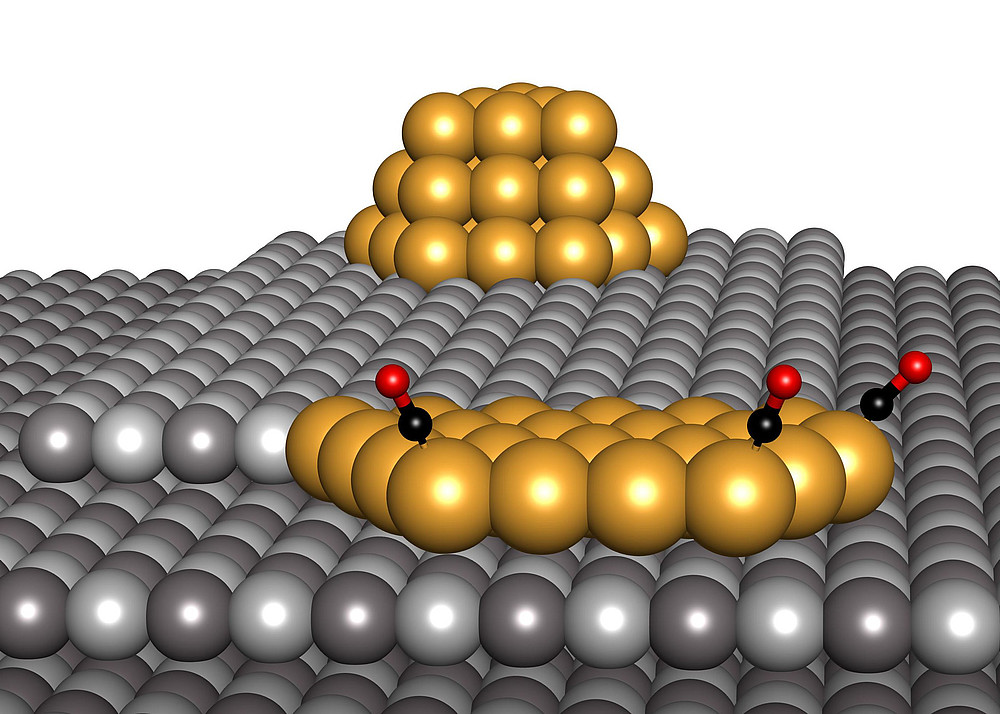Model Catalysts
Preparation, adsorption and reactivity
Heterogeneous catalysis has an enormous economical and societal impact. The materials used for heterogeneously catalyzed reactions are highly optimized, consisting often of mixtures of various compounds with specifically tuned electronic and morphological properties. In our research, we follow the Surface Science approach to heterogeneous catalysis. This basically means that "simple" model systems, based on the use of well-defined substrates, are being investigated. These include single-crystalline metal and metal oxide thin film surfaces, and oxide-supported metal atoms, clusters and nanoparticles.
The focus of our studies is on the preparation of the model catalysts, the specific role of metal-support interactions, and on adsorption and reactivity. The various properties are investigated with a range of surface science techniques, including X-ray photoelectron spectroscopy (XPS), scanning tunneling microscopy (STM), infrared reflection absorption spectroscopy (IRRAS), and temperature programmed desorption (TPD). Our studies are not limited to ultrahigh vacuum conditions, but can be extended also to elevated pressure conditions and the study of solid-liquid interfaces.
